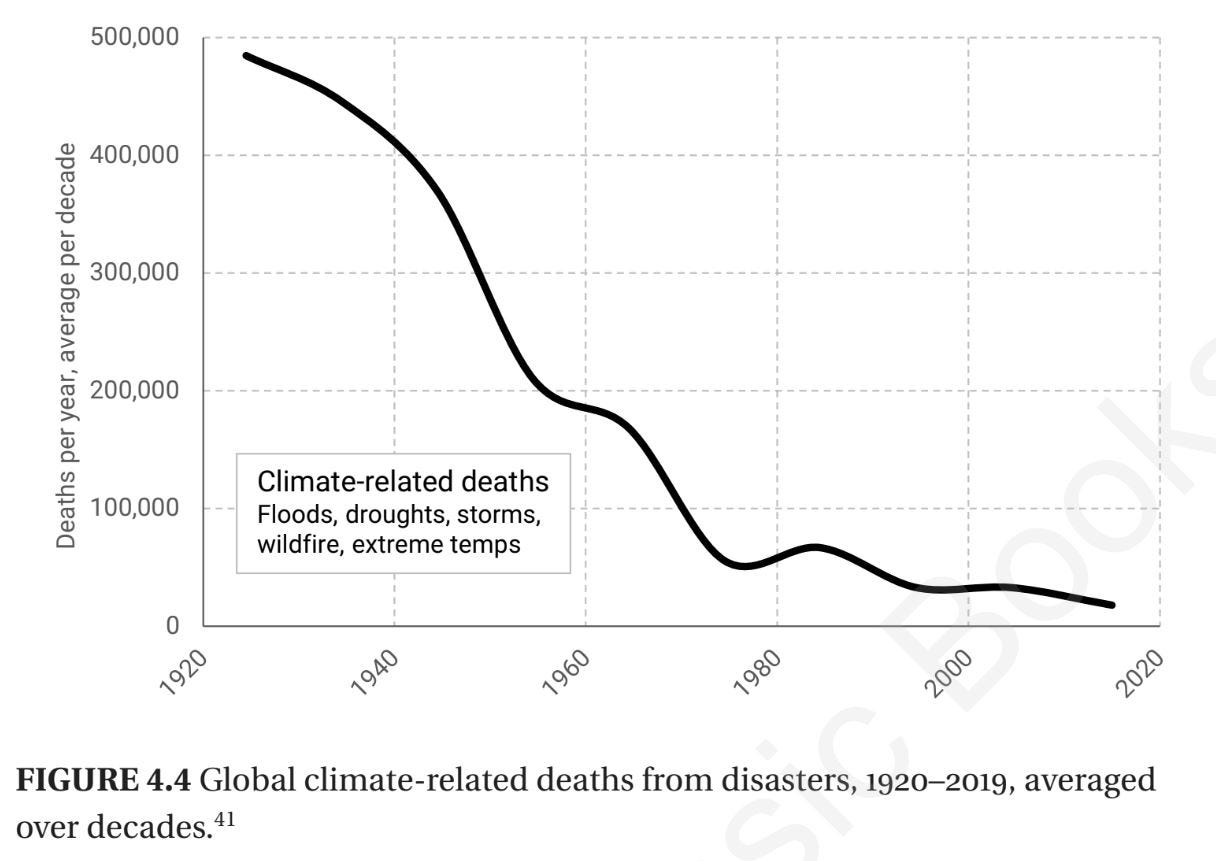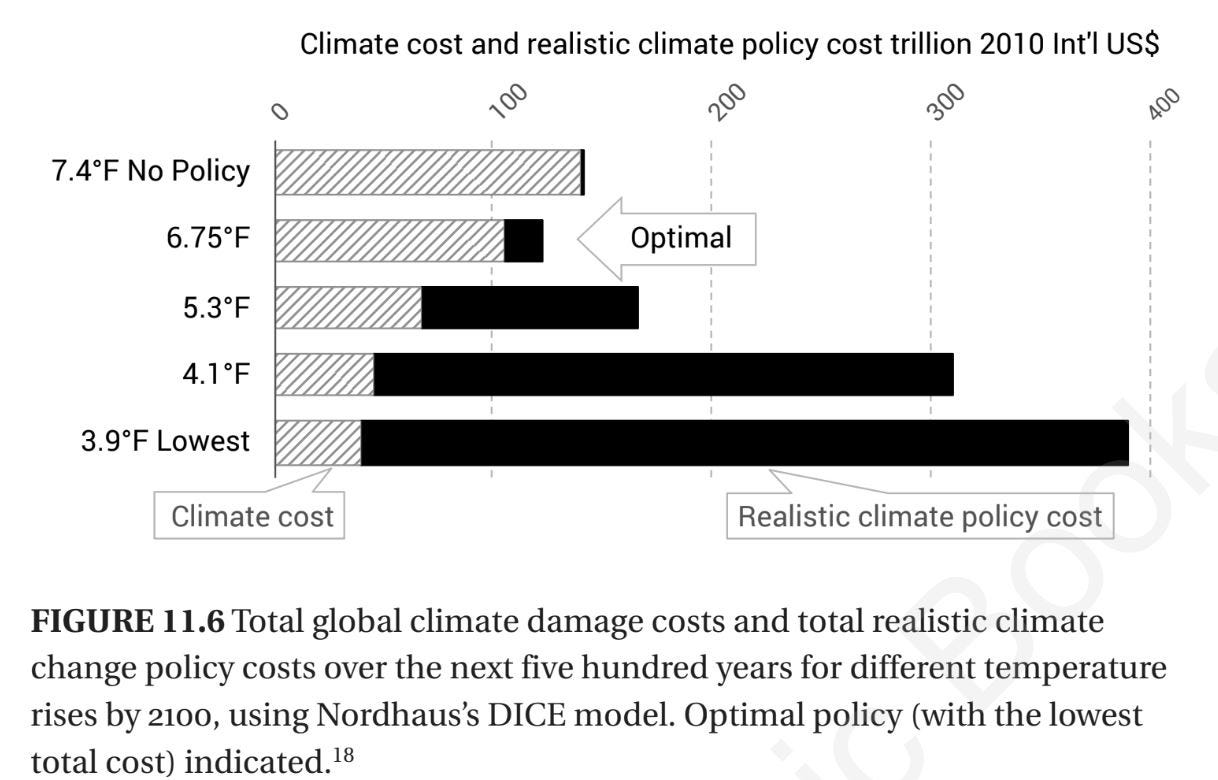Calculating Climate Costs
The ‘skeptical environmentalist,’ Bjørn Lomborg, is back with a new book endorsing a carbon tax.

False Alarm How Climate Change Panic Costs Us Trillions, Hurts the Poor, and Fails to Fix the Planet by Bjørn Lomborg Basic, 305 pp., $30
Danish economist Bjørn Lomborg is best known for his book The Skeptical Environmentalist, a tour de force in which he systematically debunked the claims of the environmental movement on virtually all of its issues across the board, ranging from overpopulation and pollution to insecticides, deforestation, mass extinction, chemical carcinogens, nuclear power, global warming, and genetically modified crops. This performance was followed by Cool It, a smaller 2007 book (and 2010 documentary) in which he showed that, overall, global warming would be good for humanity (far more people die of excess cold that excess heat). Both these books greatly enraged the environmental movement worldwide, particularly because Lomborg, a Scandinavian social democrat, is fundamentally a man of the left.
In his new book, False Alarm, Lomborg affects a softer tone. He embraces the central environmentalist position—that global warming will cause great harm—in order to gain a hearing for his case that the prescribed cures are worse than the disease.
At times, Lomborg concedes too much to the green tribal line, as when he briefly employs the toxic term “climate change deniers.” For the first seventy or so pages of the book, Lomborg offers a soft tour of alarmist claims that climate change is causing catastrophes including flooding, heat waves, droughts, extreme weather, forest fires, wars, and so forth. He shows conclusively that these claims are all without foundation—or even are the reverse of the truth; see the graph below—but still feels the need to conclude each section with a statement like “just to be clear, global warming will in total have a negative impact on our planet and well-being, so overall, there will be more bad than good impacts to describe.” The effect is something like that of a generally sound Soviet biology textbook whose authors nevertheless out of politically correct prudence sprinkle among the pages occasional praise of Stalin and Lysenko.

From Lomborg’s False Alarm, a figure showing that despite 100 years of global warming, and a quadrupling of the world population, climate-disaster-related deaths have fallen 99 percent over the past century.
But Lomborg is clearly playing along for a reason, which is—without saying it explicitly—to try to educate his readers about a concept that economists and policy analysts call statistical murder: “lives lost that could have been saved had public policy been focused on implementing the most effective regulations first.” Basically, what this concept amounts to is that by choosing to spend life-saving money less efficiently than you could, you are killing people.
So, for example, imagine a highway department with $300 million to spend on repairs. And instead of spending it on a hundred $3 million repairs that are each expected to save one life apiece, the department chooses to spend it all on one politically promoted boondoggle that is expected to save one life. The net effect of its action is to have killed 99 people. What Lomborg does—and here is where the book really shines—is go through all the dangers global warming activists cite, for example the spread of malaria as warming expands the range of tropical mosquitoes, or flooding due to sea-level rise, and show that they can be countered thousands of times more efficiently by direct solutions (insecticide-coated nets in the former case, dikes in the latter case) than by imposing draconian restrictions on fossil-fuel use in order to attempt to reduce warming.
Lomborg provides many cost-effectiveness calculations, but perhaps the two most important are his calculations regarding the Paris Agreement and carbon neutrality by 2050 program. The Paris Agreement, “the most expensive pact in human history, is likely to incur costs of some $1-$2 trillion per year by 2030,” he writes—roughly equal to the combined military spending of the entire world. And what would we get in return for this vast expense? “A reduction in temperature by the end of the century of about 0.05°F,” Lomborg writes. “What this tells us is that even in an optimistic scenario, the Paris Agreement isn’t going to come anywhere close to solving global warming. It will have a minuscule impact on the temperature by 2100.”
Then there is the much more aggressive carbon neutrality by 2050 program. More than sixty countries (and, domestically, a handful of states with Democratic legislatures and governors) have pledged to meet the goal of having net carbon emissions of zero. If adopted globally, such a scheme might, according to Lomborg, achieve a few degrees temperature reduction by the end of the century, but at a cost exceeding the total current government budgets of every country on Earth—not once, but every year—and leave the world as a whole much poorer than it could have been without such drastic intervention. As Lomborg notes, “All this is far easier said than done. It is going to be very expensive. And, in every case, the promise is likely to be broken.”
Lomborg points out, rightly, that policies that drive up fuel and electricity prices are highly regressive, impacting the poor much more harshly than the rich:
The truth is that climate policies hurt the poor everywhere, even in countries like the United States, because higher energy prices have a disproportionate negative impact on the poor. . . . This is one of the reasons why rich elites have no problem saying we should increase gas prices to $20 a gallon—they can easily afford it.
Conversely, lower energy prices are life savers:
High energy prices literally kill people, as one 2019 study shows. Researchers looked at the natural experiment that happened around 2010, when fracking delivered a dramatic reduction in costs of natural gas. The massive increase in availability of natural gas drove down the price to heat homes. Cold homes are one of the leading causes of death in winter: there is a strong connection between low indoor temperature and increased risk of strokes, heart attacks, and respiratory diseases. So reducing the price of heat saves lives. The study estimates that these new lower energy prices save about eleven thousand Americans from dying in winter every year.
If climate policy is to work, it will drive up the price of energy to reduce consumption. So a climate policy reversing the price reduction due to fracking will drive energy prices back up. People will be less able to heat their homes, and the consequent death rate will go back up. This is all right on target, so it comes as shock when, after explaining all this, Lomborg comes out supporting emission taxes on carbon dioxide, a fashionable proposal that would use concern over emissions as a cover for transferring the tax burden from the rich to the poor.
Here’s how Lomborg arrives at this conclusion.
First, he accepts the estimate that we will likely see a global average temperature increase of 7.2 degrees Fahrenheit (4 degrees Celsius) by 2100. This was the figure set forth by the International Panel on Climate Change in 2007 as the likeliest outcome for a scenario in which the world economy continues to grow rapidly and remains heavily dependent on fossil fuels, and no major policy to mitigate climate change is put in place.
But consider what it would take to reach that temperature increase. Greenhouse warming does not rise linearly with emission rates, but rises linearly as carbon dioxide atmospheric concentrations multiply (i.e., logarithmically). Thus, for example, global temperatures have increased about 1 degree F since 1940, in association with a rise of atmospheric carbon dioxide concentrations from 300 to 400 parts per million. To get an additional 1 degree F would require multiplying current atmospheric carbon dioxide concentrations by another factor of 4/3 to 533 ppm. To get a 2 degree F rise, atmospheric carbon dioxide concentrations would have to rise by (4/3)2 to 711 ppm. It’s possible that could happen by the end of the century. But to get the 7 degree F rise that Lomborg accepts would require multiplying current 400 ppm atmospheric carbon dioxide levels by (4/3)7 to reach 3,000 ppm, which is wildly unrealistic.
A 1 degree F temperature rise is not a big deal—and, as Lomborg rightly notes, not necessarily bad. It’s the equivalent average climate impact of someone in the northern hemisphere moving about 40 miles south. A 7 degree F temperature rise would have much more noticeable consequences, comparable to moving from San Francisco to Santa Barbara. This is something that might be worth avoiding if the cost were not too great. So Lomborg looks for a “sweet spot” that would minimize the sum of the economic cost of various levels of emission taxation and the losses he believes the temperature rise associated with each of them would be, over the next 500 years. For this, he draws heavily on a model developed by the economist William Nordhaus. Lomborg’s summary result is given in the following graphic.

On the basis of a forecast of economic costs and benefits and climate impacts over the next 500 years, Lomborg says imposing a moderate carbon tax would be best.
In the first place, no one has any idea of what the economy is going to be doing 50 years from now, let alone 500 years. So, with all due respect to William Nordhaus and his model, this entire calculation is simply nonsense on stilts. But if we were to grant any degree of legitimacy to it, the first thing we would note would be that the difference in total (climate impact + tax) costs between the “no policy” scenario and his “optimal” scenario (involving a 6.75 degree F temperature rise and a carbon tax equal to $2.40/gallon of gasoline) are well within any reasonable estimate of the likely margin of error.
It is difficult to believe that all this is nothing more than a rationalization for jumping on the carbon tax bus, albeit for the laudable purpose of attempting to restore the sanity of its currently crazed passengers.
Remember: Taxes are not about weather. Taxes are about money.
In addition to moderate carbon taxes, Lomborg’s other recommendations for dealing with climate change include direct measures to counter the effects of warming; more R&D in low-emission energy sources, particularly nuclear power and geoengineering; and increasing global prosperity.
Lomborg is on very solid ground in calling for direct measures to counter the potential harmful effects associated with warming, and has the facts and figures to prove it. For example, Holland, which is largely below sea level, has not lost a single life to floods since 1953. This was accomplished not by stopping global warming—it didn’t, despite all its gas taxes—but by building “an extensive system of dams and storm-surge barriers . . . costing about $11 billion in total.” The same logic holds true for all warming-related issues; if you have an insect-infestation problem, you can do a lot more about it with insecticide than with fuel taxes.
As for more R&D to advance technology in general, and nuclear energy in particular, I’m all for it. But Lomborg is wrong in his assessment that the problem blocking the implementation of nuclear energy has been technical stagnation. As old-fashioned as they may be, the pressurized water reactors introduced by Hyman Rickover in the 1950s still work just fine. The problem has been hyperregulation, which has increased the average time it takes to build a nuclear power plant in the United States from about three years in the 1970s to sixteen today. It is this regulatory sabotage, driven by the anti-nuclear agitation of self-described environmentalists, that has made nuclear power non-cost-effective. Unless this problem is addressed, developing thorium reactors, or breeder reactors, or any other advanced designs will do no good.
Lomborg approaches geoengineering gingerly, which is just as well, because he doesn’t really understand it. Some of the ideas he has picked up from popular discussions of the subject—like polluting the atmosphere with sulfur dioxide to cause cooling, or building machines to capture carbon dioxide from the air (it would be hundreds of times easier to capture it from smokestacks)—are nonsensical. He mentions planting lots of trees. That’s a good idea, as it would not only reduce warming (through both carbon dioxide reduction and increased local transpiration cooling) but freshen the air too. However he doesn’t mention another effective way to counter carbon dioxide emissions: putting them to work by fertilizing the currently nearly sterile open oceans. The majority of the world’s oceans, covering perhaps 60 percent of the planet’s surface, lack trace elements like iron necessary for phytoplankton growth—and so are estimated to contain less than 10 percent of the total ocean life. A modest program of fertilization could transform these so-called “ocean deserts,” producing huge phytoplankton blooms taking up carbon dioxide while restoring the world’s fisheries.
Lomborg’s last point, however, is his strongest. The best way to deal with global warming is to increase global prosperity. Whether the climate is warmer or colder, prosperous people can deal much better with whatever befalls them. And their lives are materially much better when nothing much is happening as well.
Lomborg concludes:
We definitely need to address global warming. . . . But if we truly want to make the world a better place, we have to be very careful that our preoccupation with climate change doesn’t distract us from other crucial problems. We can improve the human condition far more by opening the world to free trade, ending tuberculosis, and ensuring access to nutrition, contraception, health, education, and technology. . . .
Overspending on bad climate policies doesn’t just waste money. It means underspending on effective climate policies and underspending on the opportunities we have to improve life for billions of people, now and into the future. That’s not just inefficient, its morally wrong. The choice we face, Lomborg writes, is between a human future driven by fear and one driven by ingenuity. On that, he is exactly right.


